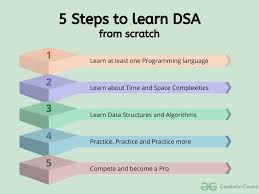
Data Structures and Algorithms (DSA) form the cornerstone of efficient software development, driving performance and scalability in applications. Data structures are systematic ways of organizing and storing data, enabling efficient access and modification. Algorithms, on the other hand, are step-by-step procedures or formulas for solving problems. Mastery of DSA is essential for developers, as it enhances their ability to write efficient, optimized code, and tackle complex computational problems effectively. From sorting and searching to data management and resource optimization, DSA is fundamental to creating high-performance software solutions.
One of the critical aspects of DSA is its role in optimizing computational resources. Proper selection and implementation of data structures, such as arrays, linked lists, stacks, queues, trees, and graphs, can significantly impact the efficiency of algorithms. For instance, using a hash table for quick data retrieval, a balanced tree for maintaining sorted data, or a graph to represent complex relationships can lead to substantial improvements in runtime and memory usage. Algorithms like QuickSort, Dijkstra’s shortest path, and dynamic programming techniques further illustrate how strategic problem-solving approaches can minimize computational costs and enhance application performance.
In the context of real-world applications, DSA is indispensable across various domains. In web development, efficient data structures ensure fast data retrieval and seamless user experiences. In financial systems, algorithms manage and process large volumes of transactions in real-time, ensuring accuracy and security. Search engines rely on sophisticated algorithms to deliver relevant results within milliseconds, while social media platforms utilize graph algorithms to recommend connections and content. As technology advances, the demand for proficient DSA knowledge continues to grow, underscoring its importance in developing innovative and robust software that meets the evolving needs of users and industries.